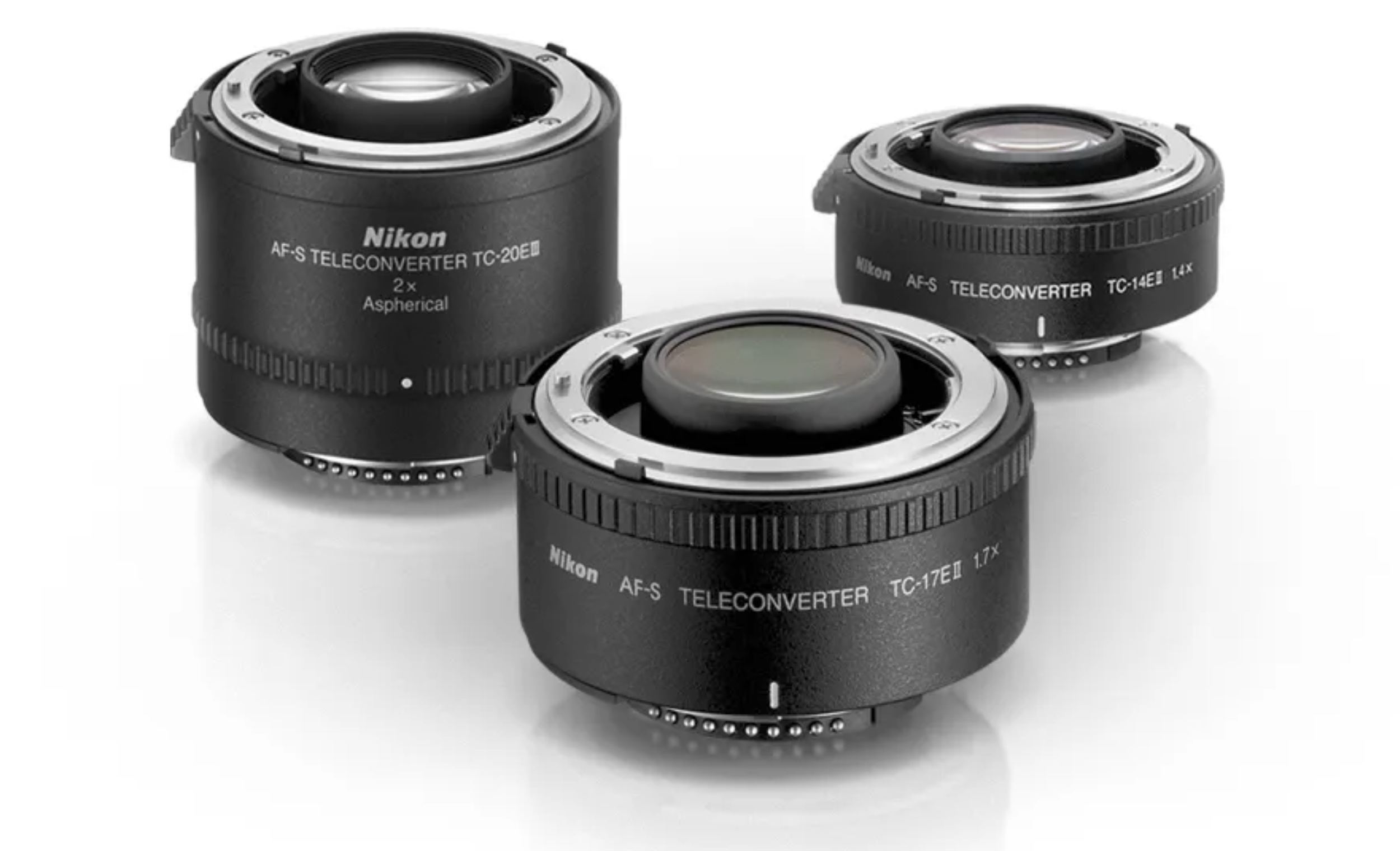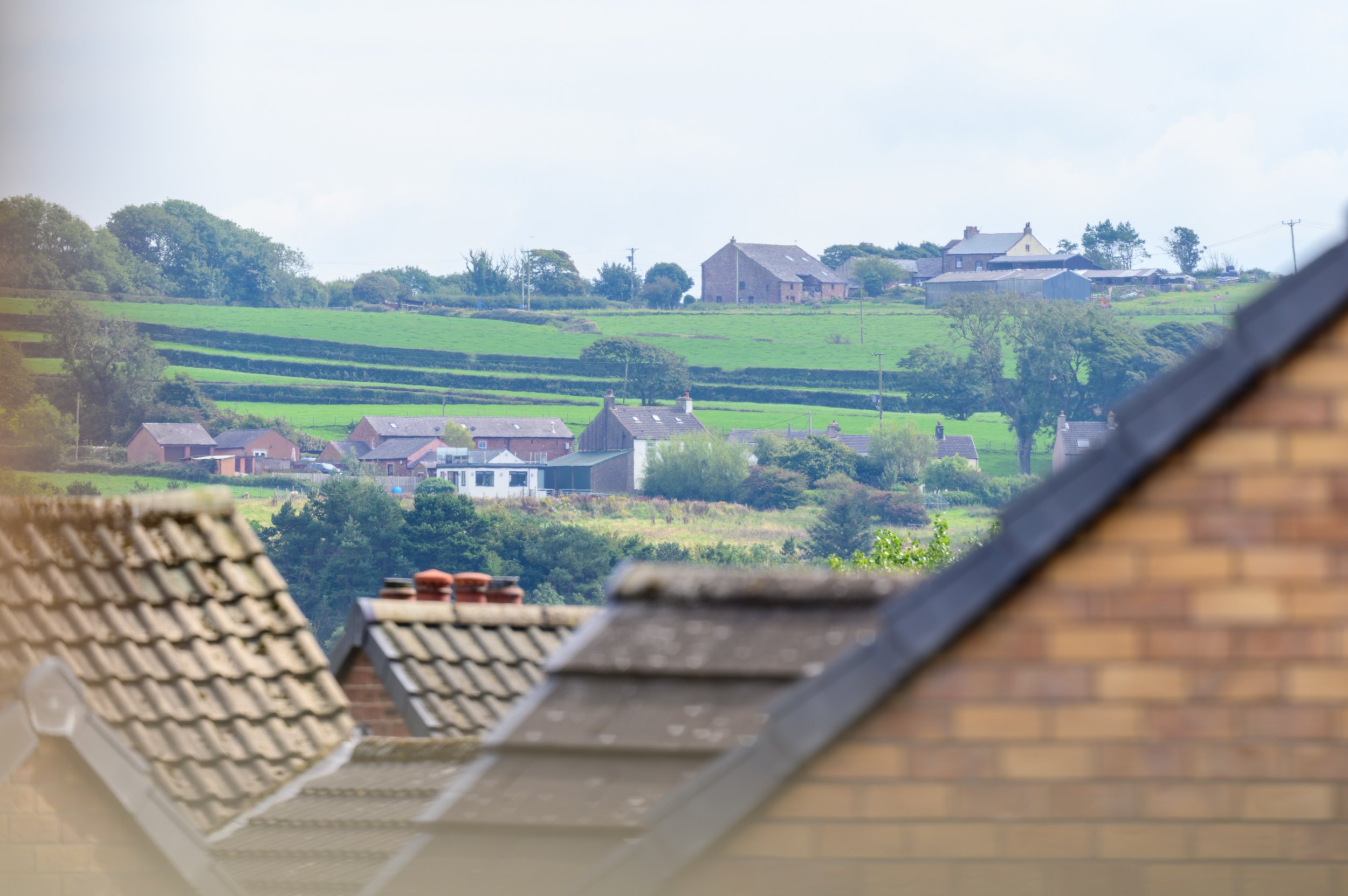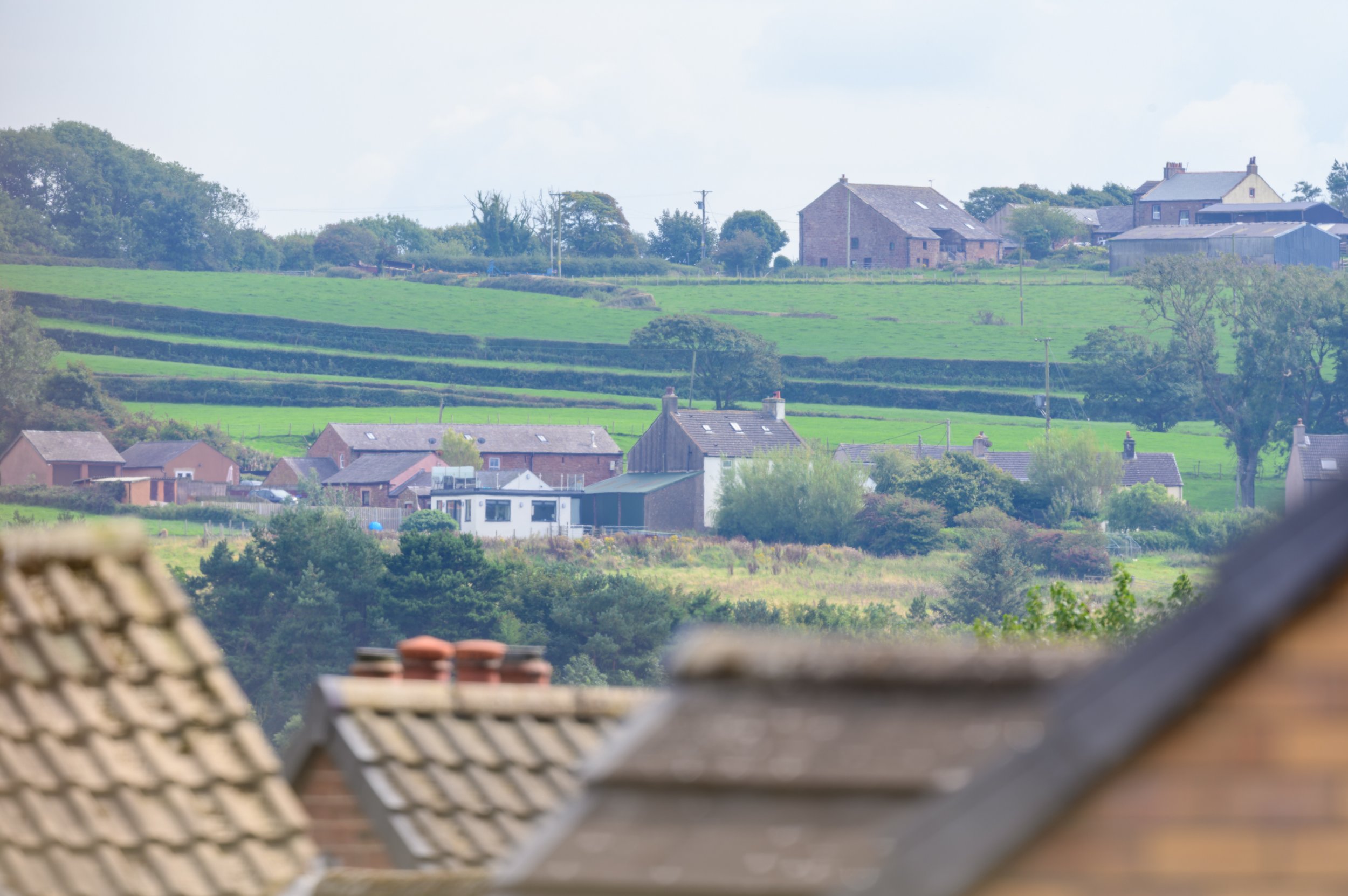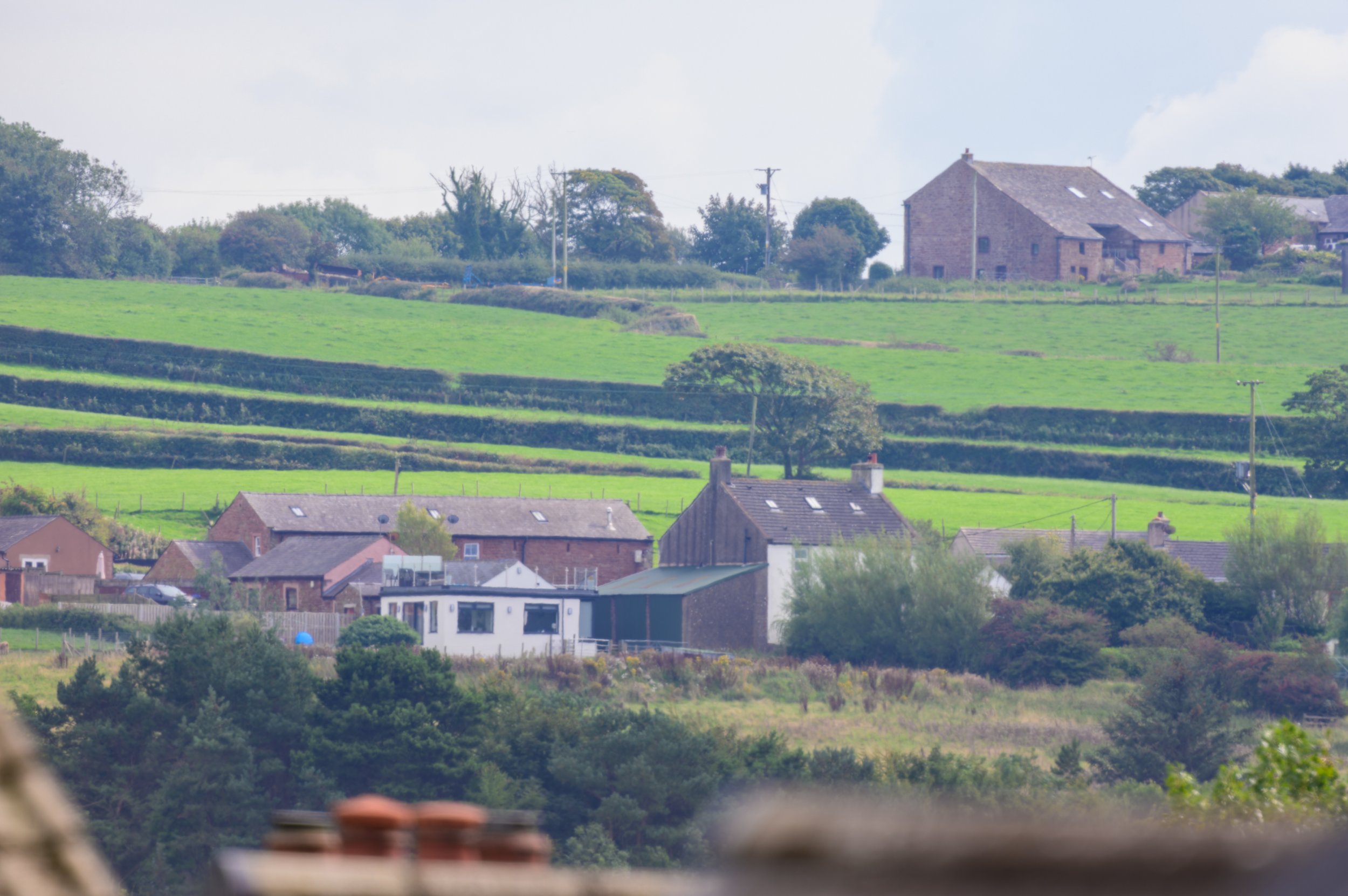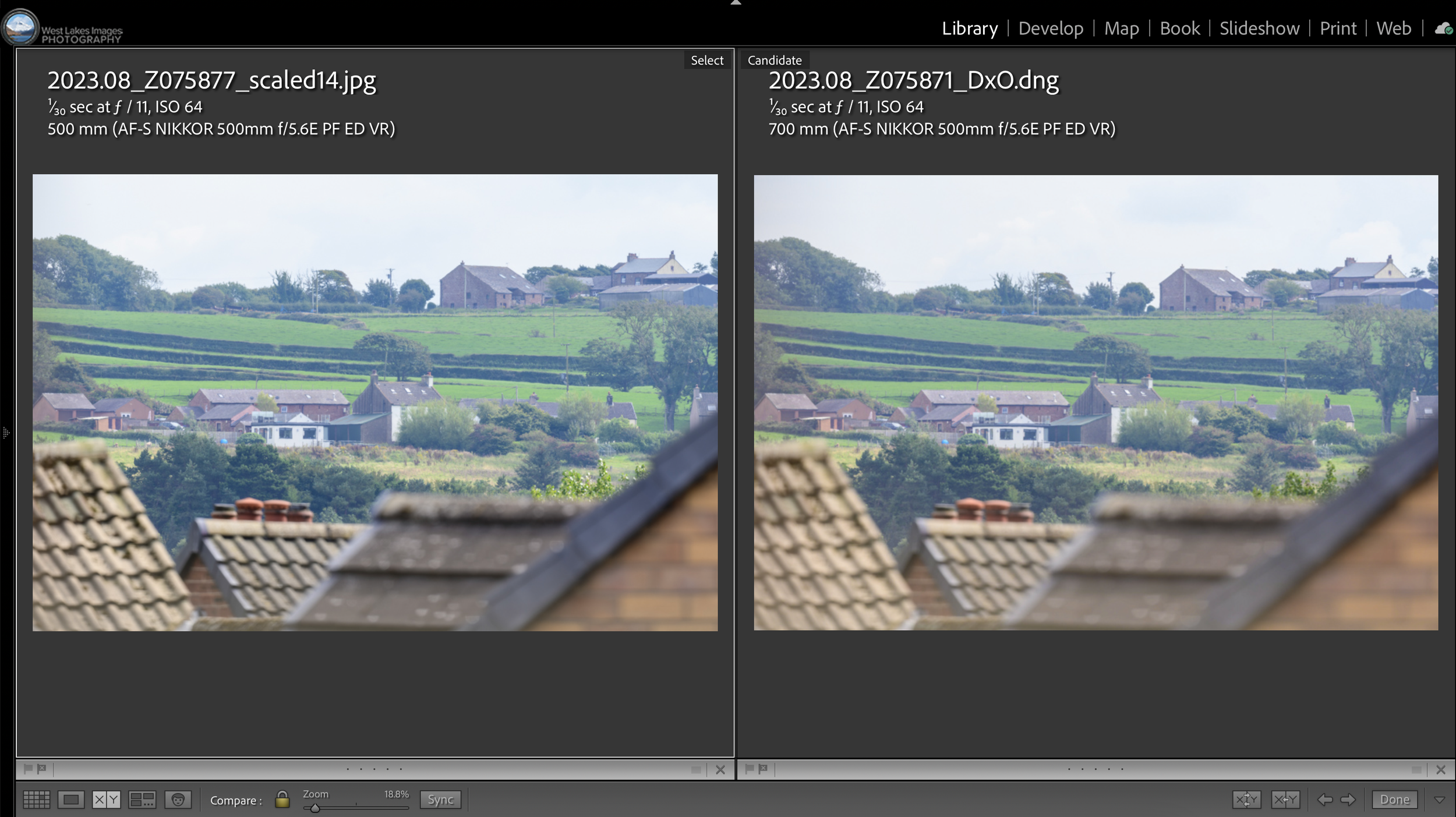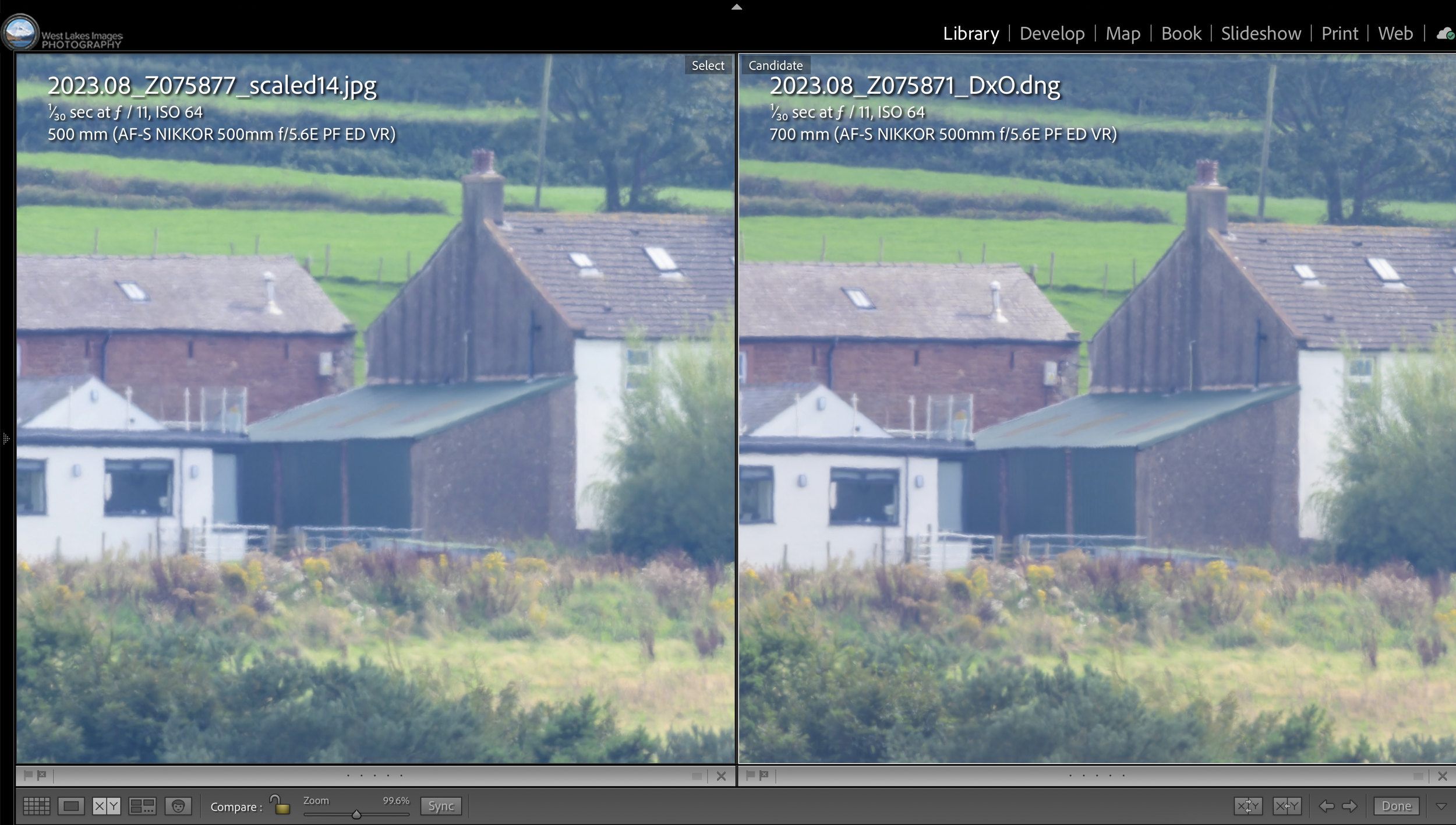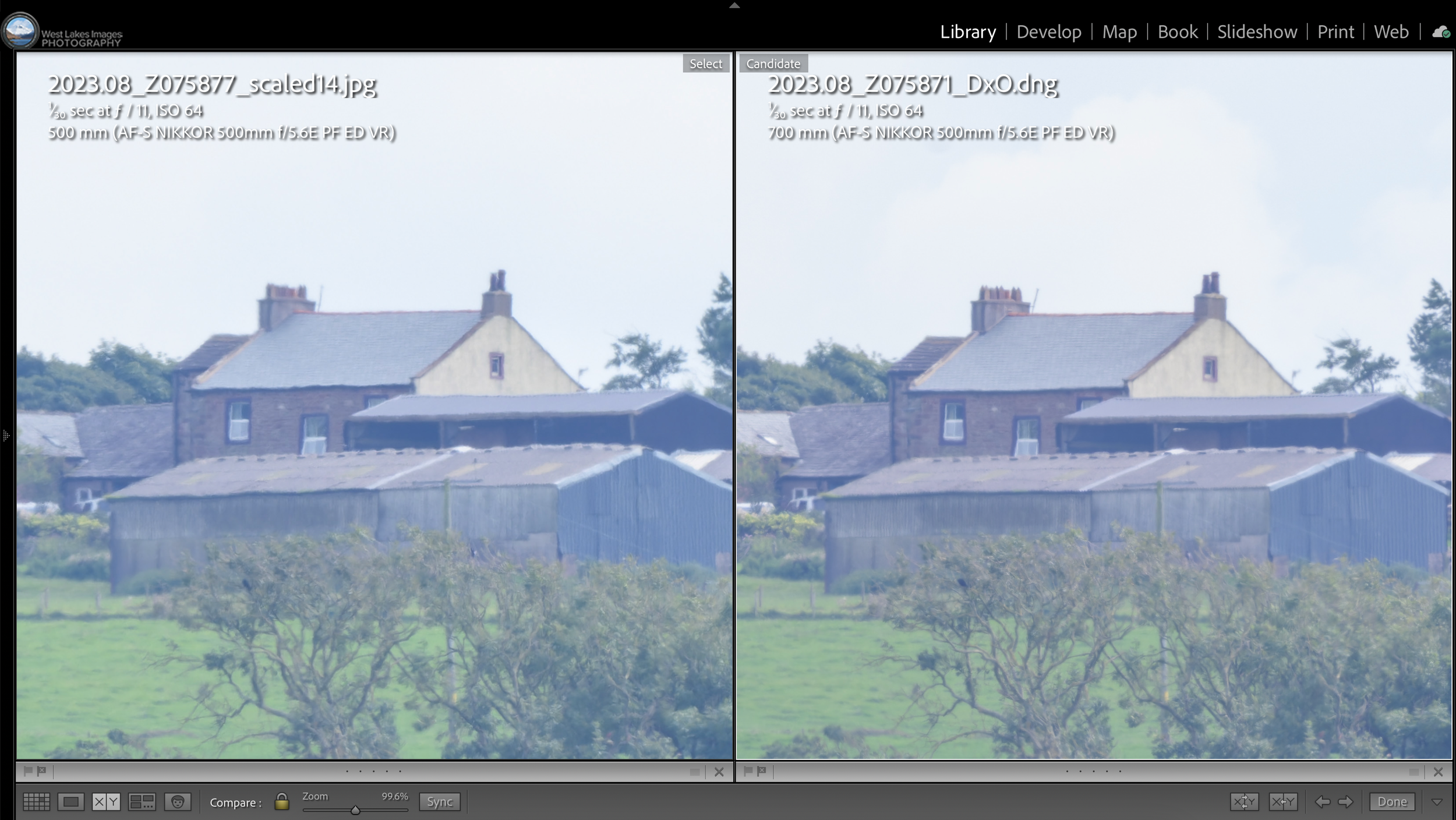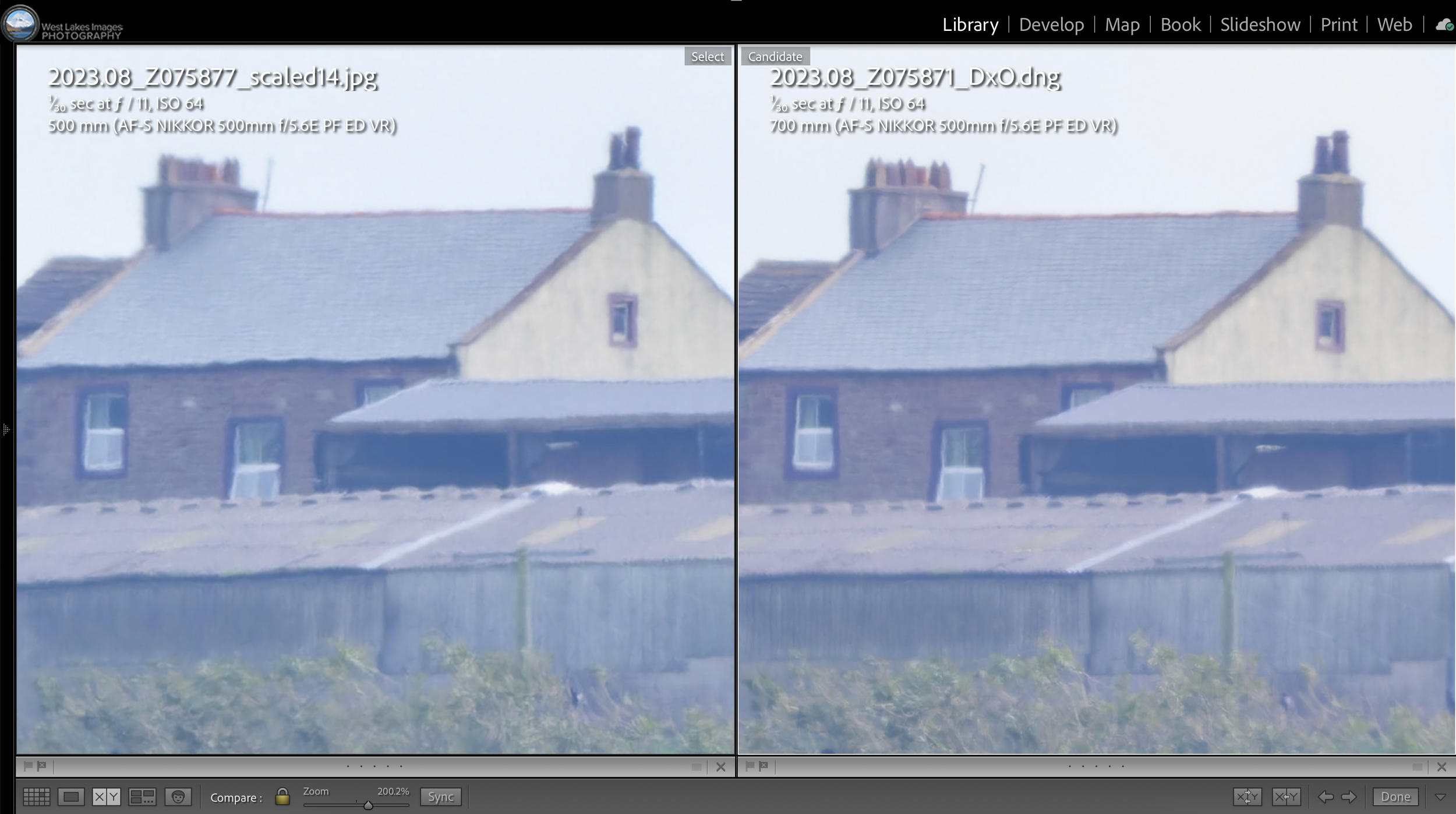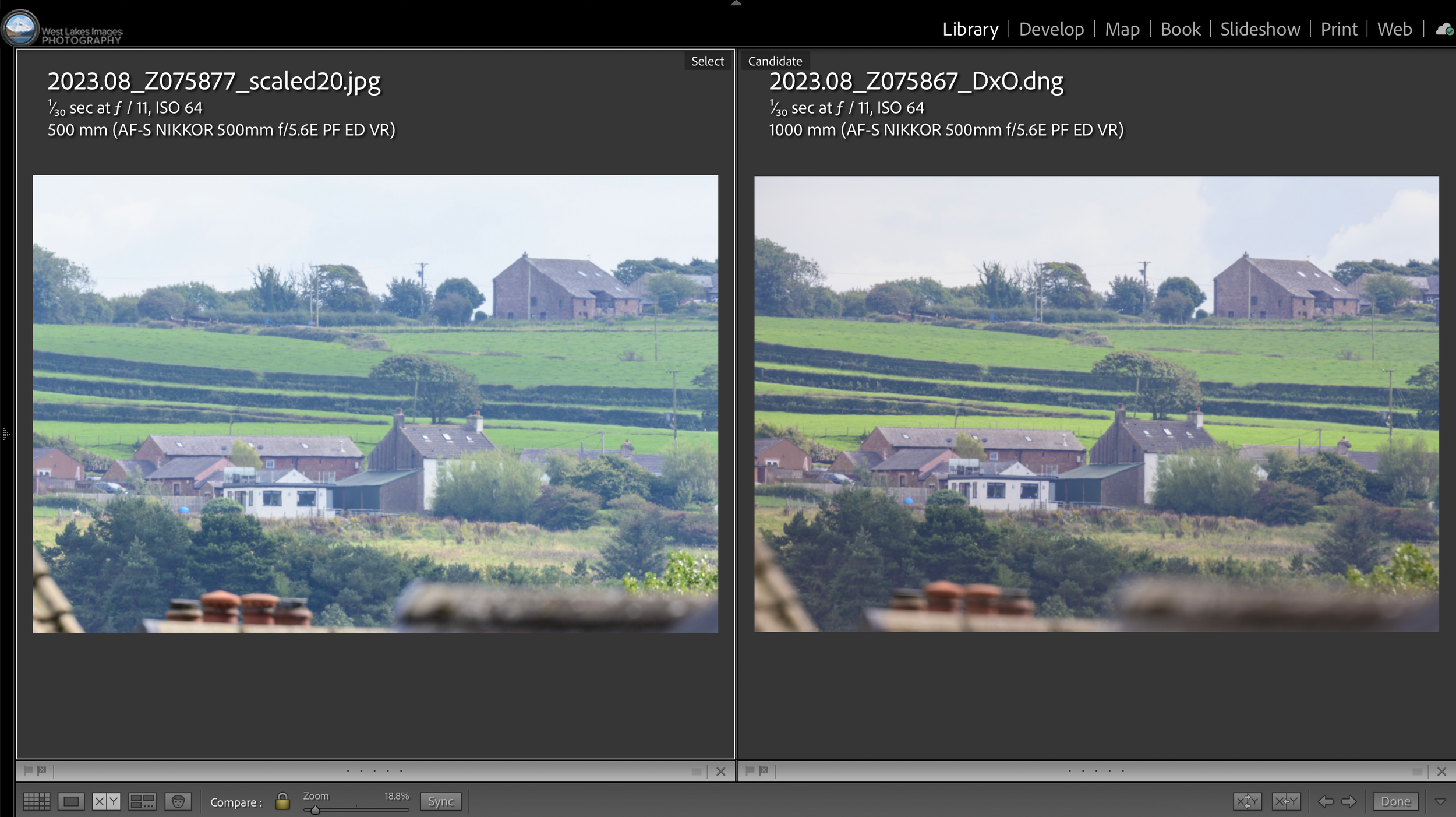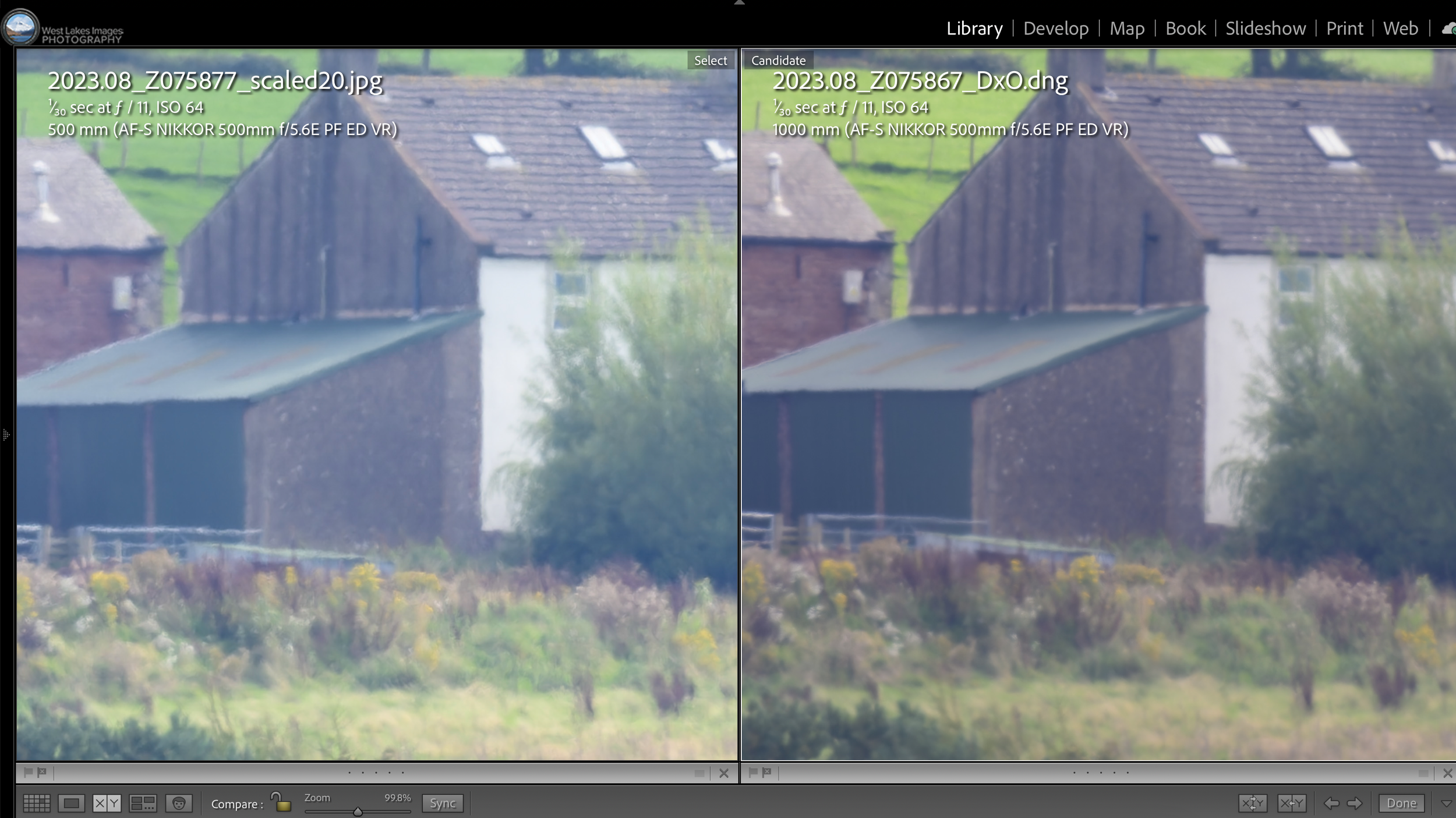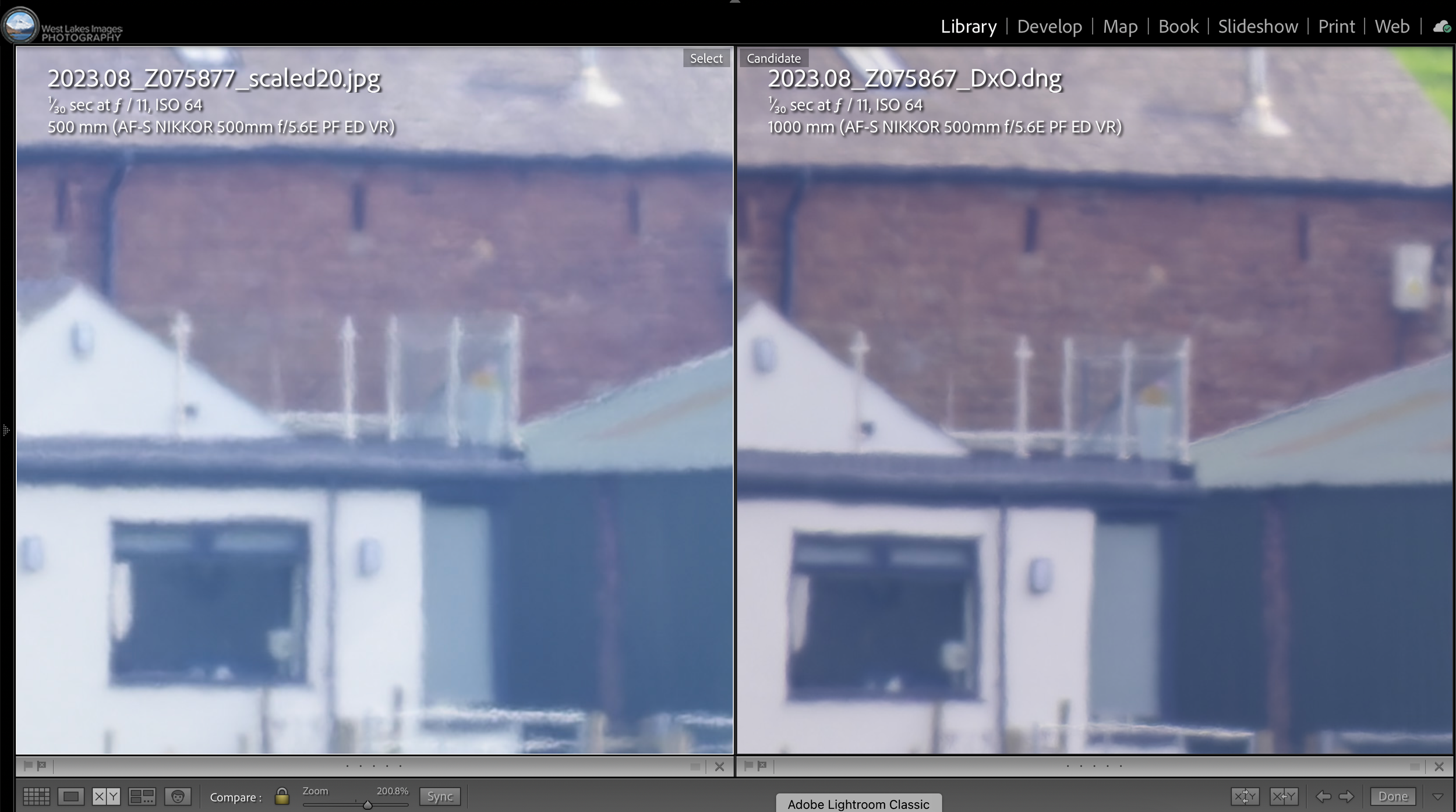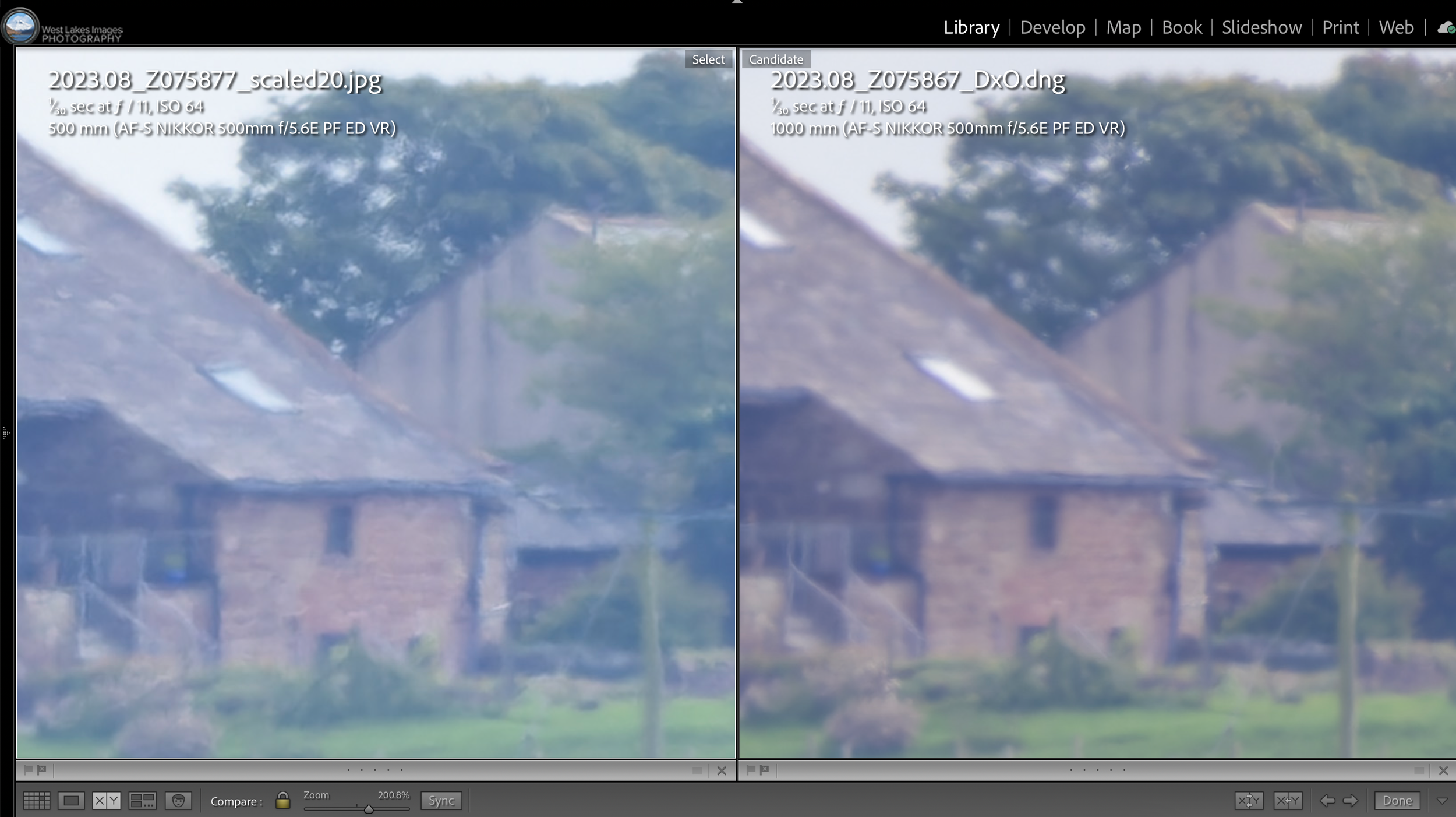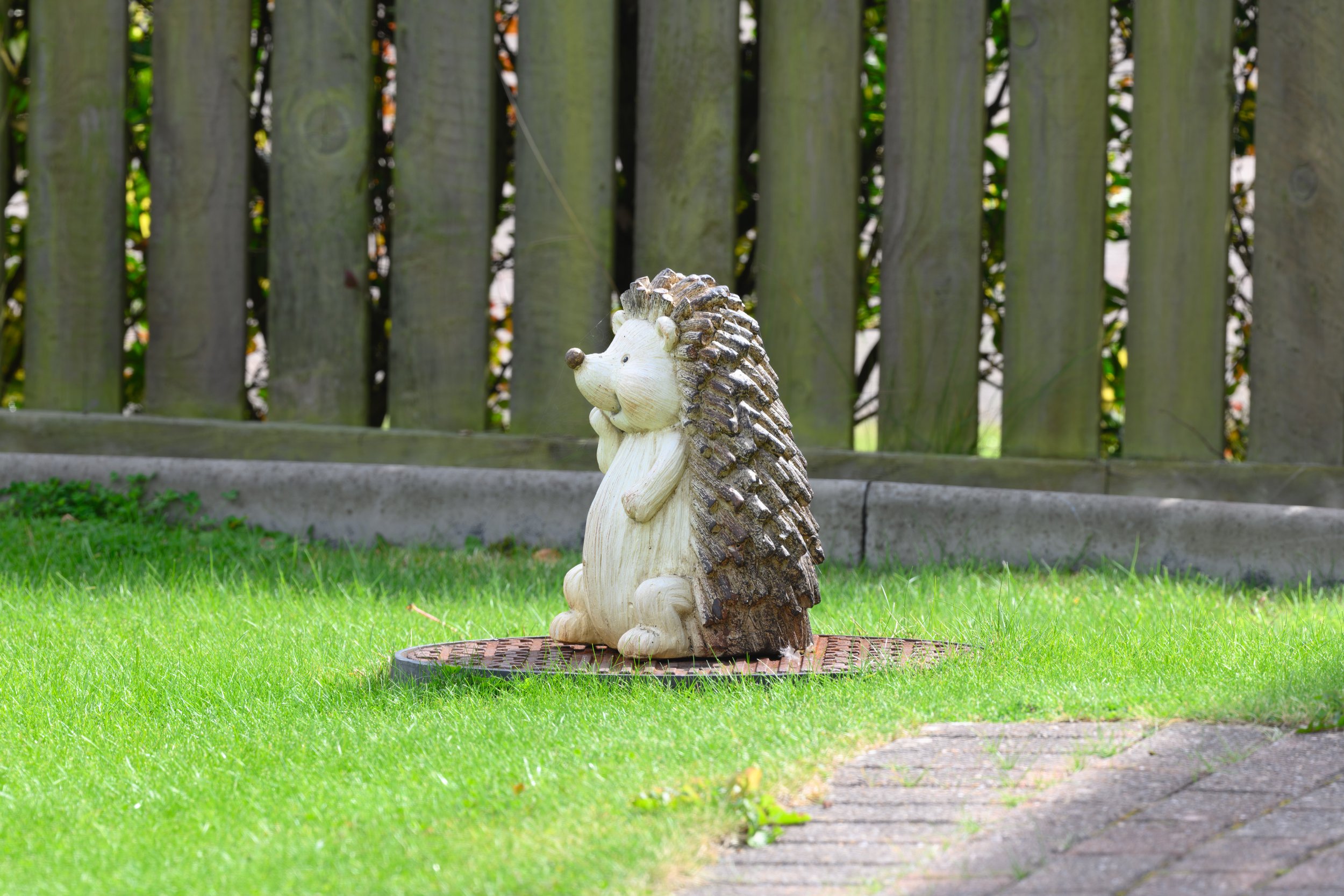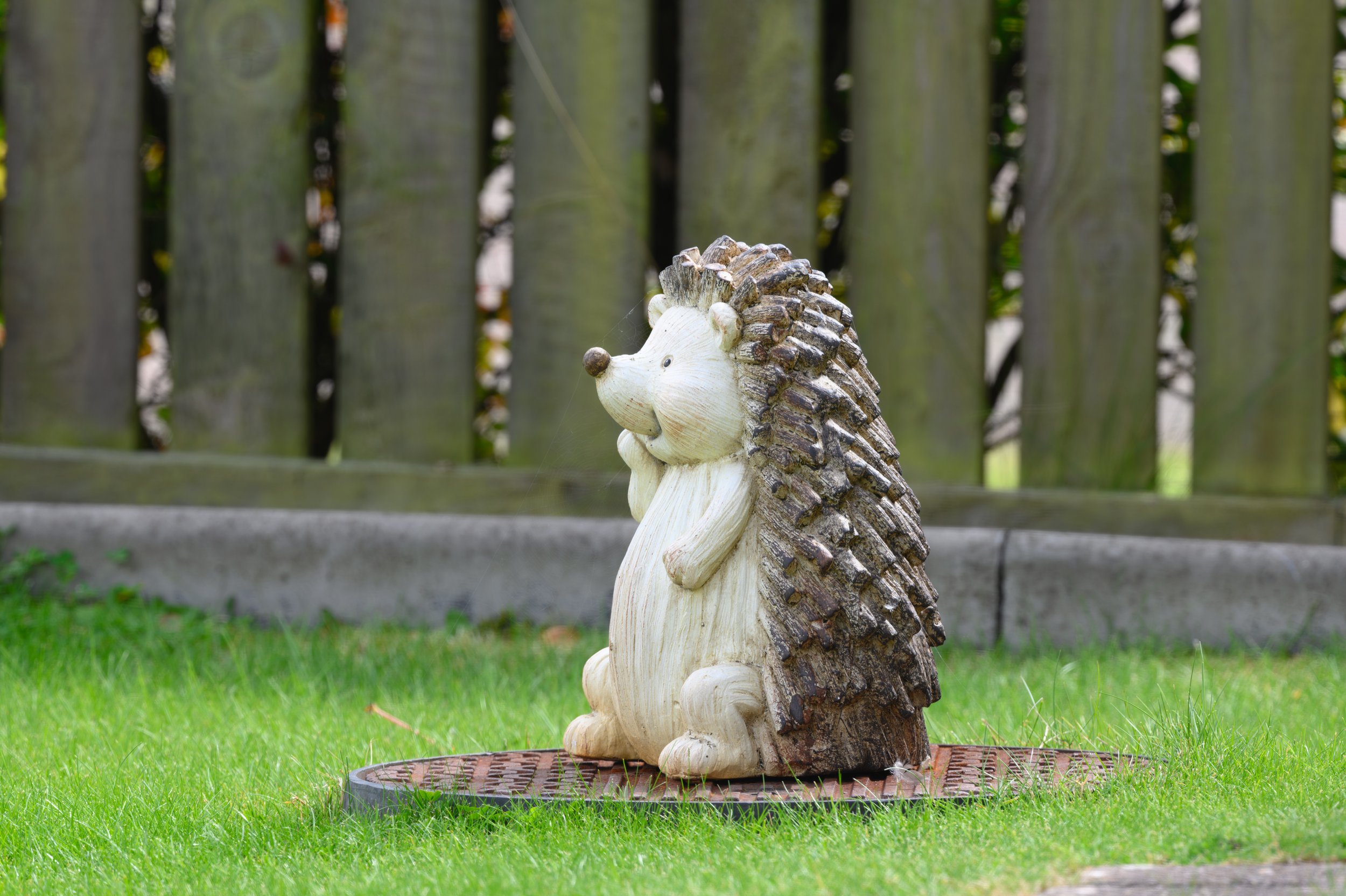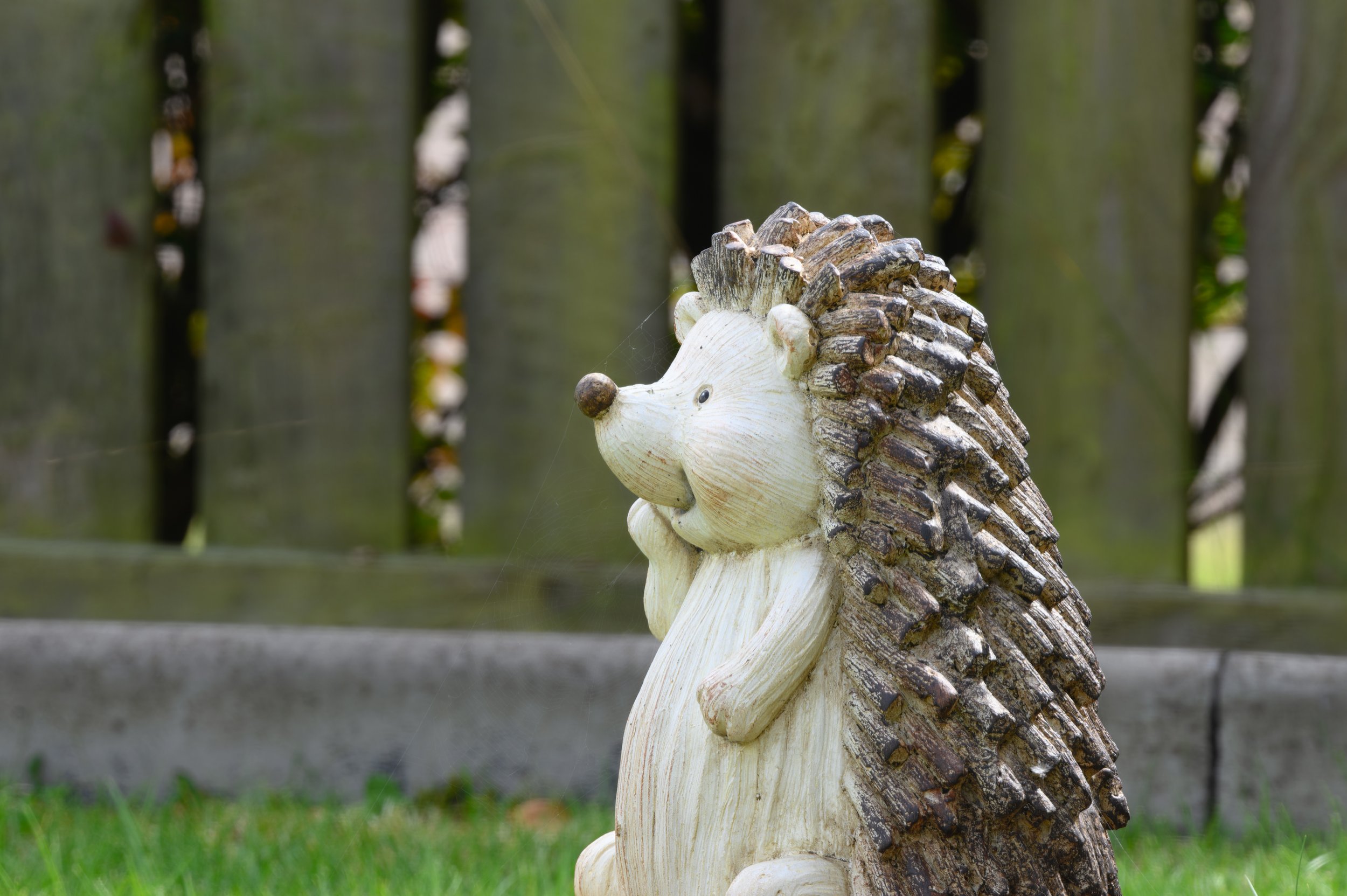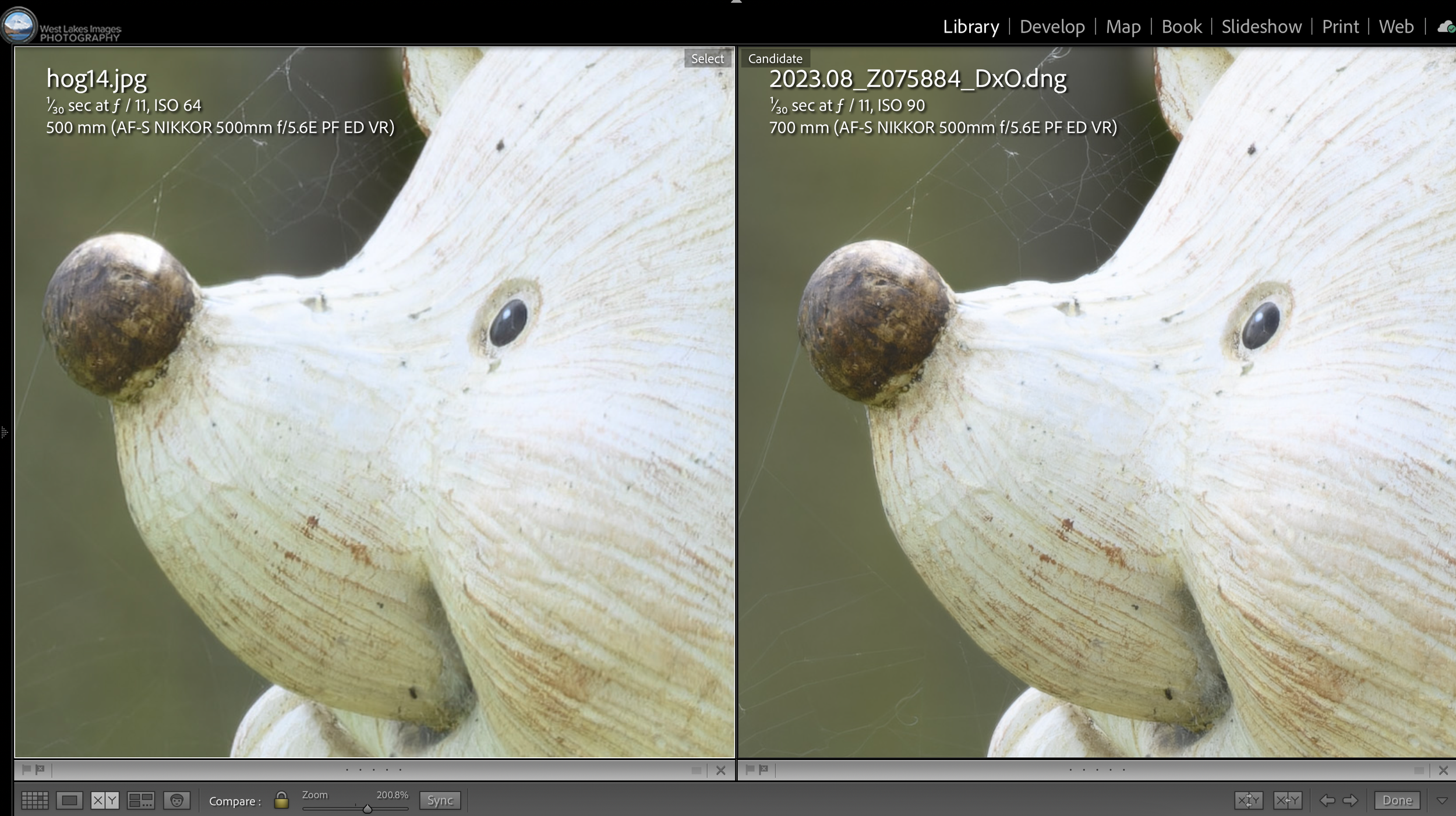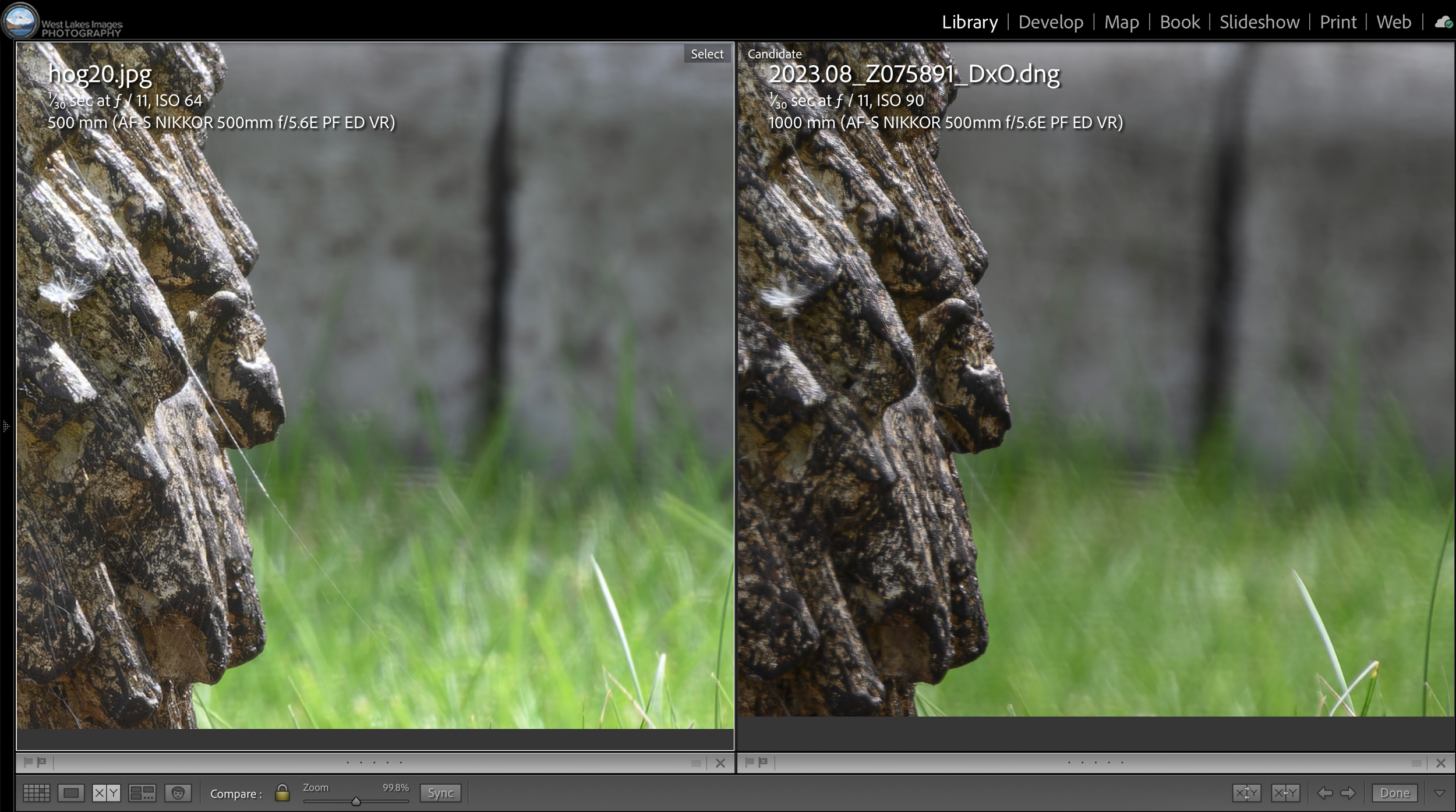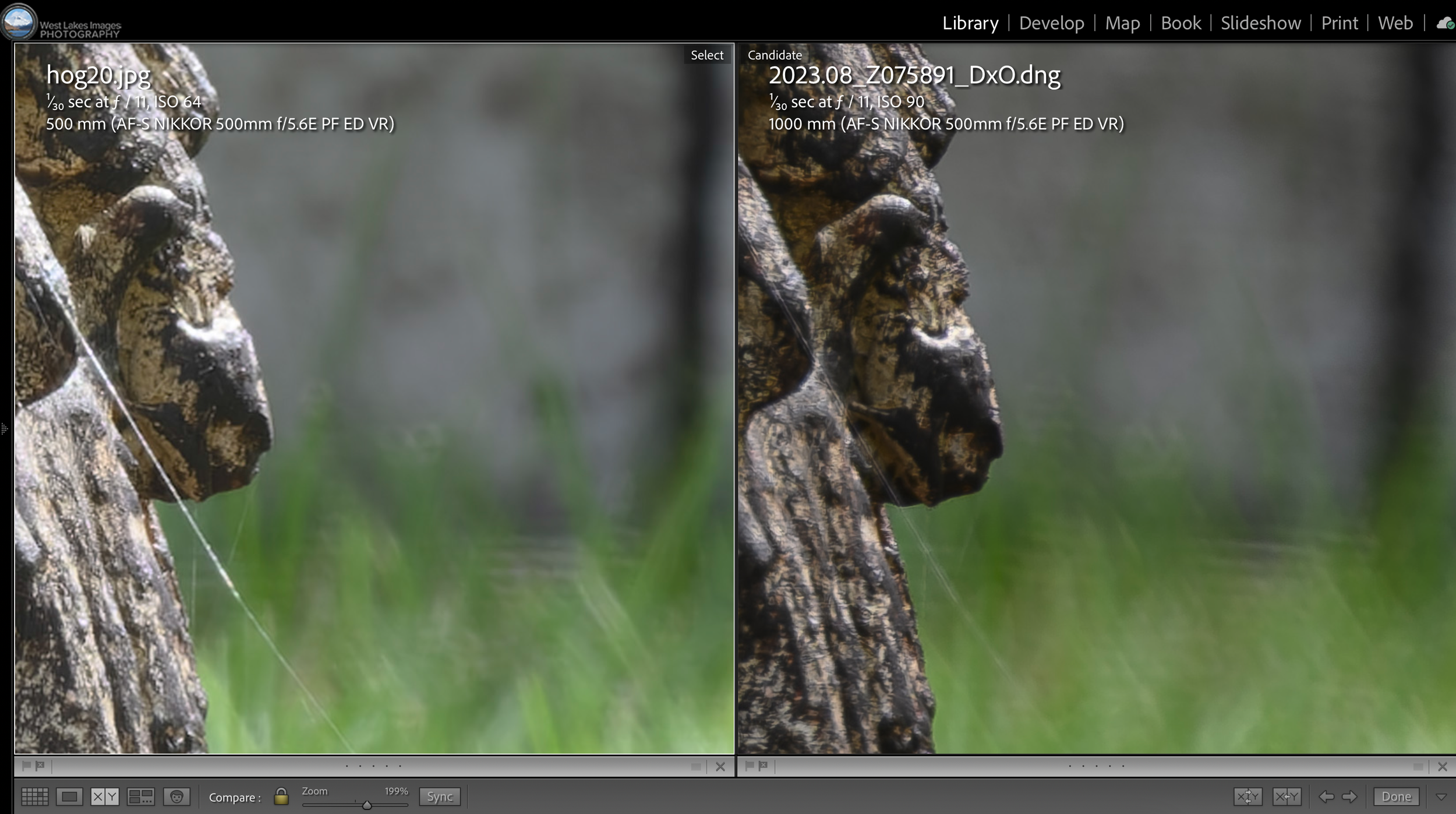Use a Teleconverter or Crop the Image ?
Teleconverters or Post Production Cropping?
Many photographers dream have having the perfect collection of lenses that will enable them to get the perfect shot. When it comes to telephoto lenses, however, you never seem to be able to get in tight enough to your subject and always crave that extra reach. There are options for how to achieve this. The first is obviously to buy that extra long lens but after a certain point these ultra telephoto lenses can stretch into tens of thousands of pounds and be outside many budgets. The second method is to get up and get physically closer to your subject. If you can’t afford the ultra telephotos lens or aren’t able to get closer to your subject, for whatever reason, you can either take the picture as is and crop it to your liking post-capture, or you can use a teleconverter.
The wealth of internet wisdom currently suggests that post capture cropping provides superior results to using teleconverters. While I can see the logic behind these claims I did wonder whether there was any limit to how much cropping would be acceptable.
TL:DR - I don’t think I will be ditching my teleconverters yet. The test images show that the teleconverter images retain much more detail than cropping and resizing even taking into account the loss in sharpness using the additional optics. For my purposes, even using a 2x TC produces significantly better images for both distant and close subjects.
What Are Teleconverters?
Nikon’s current range of f-mount TC’s includes the AF-S TC-14EIII, AF-S TC-17EII and AF-S TC-20EIII
(Note a Version III 1.7x TC was not produced)
Teleconverters, often known as extenders, are lens accessories that fit onto the rear of the lens and magnify the central portion of the image circle from that lens, enabling you to increase the size of your subject in the frame. Depending on the manufacturer and model of your teleconverter it may increase the magnification of your lens by a factor of 1.4x, 1.7x, or 2x. In the case of a 70-200mm lens, for example, a 1.4x teleconverter would convert the lens into a 98-280mm zoom, while a 2x teleconverter would convert the same lens into a 140-400mm equivalent zoom.
Teleconverters are relatively small, about the same size and weight as a 50mm prime lens, which makes them far more practical to carry than multiple 500, 600, or 800mm lenses. For the purposes of this article I have considered the Nikon TC-14Eiii and TC-20Eiii teleconverters with a Nikon Nikkor AF-S 500 f/5.6 PF ED VR lens, giving effective focal lengths of 500mm, 700mm and 1000mm respectively.
The Price to Pay
While teleconverters seem an excellent solution there is, unfortunately, a price to be paid including a loss of light transmission and a loss in image quality. Any time you add additional lens elements into the light path it has an effect on the image quality. The extent of this effect depends upon a number of factors including the design of the teleconverter and the design of the lens. Magnifying the image causes the light to be spread over a wider image circle so that less light is available on the image sensor. In the case of a 1.4x teleconverter this equates to a loss of 1 stop of light. Our 500m f/5.6 lens becomes a 700mm f/8 lens. For a 1.7x teleconverter this gives a light loss of 1.5 stops and our 2.0x teleconverter loses 2 stops of light, transforming our 500mm lens into a 1000mm f/11.
The magnification effect also affects the quality of the image. Any distortion or aberration in the lens is magnified. It’s not that the images are no longer sharp; they are, but any time you add additional lens elements into an otherwise optimized light path, you invariably lose image detail. The amount of detail loss can be minimised by careful design of both the teleconverter and lens. The version iii Nikon teleconverters have superior performance than previous versions and are optimised for the high end Nikkor telephoto lenses, including the excellent 500PF lens used here. In the case of zoom lenses, however, the levels of image-quality loss often vary as you zoom through the lens’s focal range and are generally worse than when used with prime lenses. In fact Nikon deliberately restricts the use of its teleconverters to specific lenses, either to avoid physical contact between the teleconverter and rear elements of the lens or purely because the performance of a particular lens is not sufficient for the use of the teleconverter.
Another problem, particularly with DSLRs, is many autofocus systems begin losing speed and accuracy once the maximum aperture of the lens becomes less than f/5.6 or f/8. Older Nikon DSLRs tend to stop autofocusing once the lens/teleconverter combination drops below f5.6. More modern cameras tend to continue to f/8 and sometimes smaller, but the AF system may restrict you to only using the central most sensitive autofocus points. This is not as much of a problem with mirrorless cameras and many continue to autofocus at much smaller apertures (the Nikon Z7ii continues down to f/14 and the Nikon Z9 down to f/22 for example). Additionally, as well as restricting the use of autofocus, where AF does continue to operate the teleconverters can significantly slow down the speed at which the camera focuses
The Price of Post-Capture Cropping
Cropping a photograph post-capture is an easy way to frame the image where it wasn’t possible to get closer and fill the frame. As with teleconverters, cropping comes at a cost. In this case, the price is a decrease in resolution as the image is cropped, along with an equal increase in any noise when resizing the image.
Just as viewing your image files at 100% on a large monitor reveals every dust particle and lens aberration that you would never notice on the camera’s LCD or on a small print, when you crop an image, you correspondingly magnify any dust and/or defects in the file.
Cropping Is not limited by lens choice unlike teleconverters that are only available in fixed magnifications (1.4x, 1.7x, and 2x) and are only compatible with a limited number of telephoto and long focal length zoom lenses. Any photograph can be cropped by any amount or magnification regardless of the focal length of the lens used to capture the image. With todays high resolution sensors images from, say the Nikon Z7ii, can be cropped severely and still have enough pixels remaining for social media purposes. That’s a big plus in favour of cropping.
So, Which is Best ?
In order to test whether teleconverters or cropping provided the best images, I decided to take a few images from around the house. I used the Nikkor 500mm f/5.6 PF ED VR lens as the starting point and then the lens with the TC-14Eiii and TC-20Eiii teleconverters.
Two sets of images were taken to test both distant and close subjects to see if that made any difference to the results obtained. For the distance test, I set the camera on a tripod using the lens foot and completely locked down the tripod adjustment to attempt to keep the same image composition. The camera was focused on a white farmhouse near the centre of the frame. The distance between camera and subject was approximately 2,600m (based on Ordnance Survey map data). The shots were taken with the bare lens, lens + 1.4x TC and lens +2x TC. Three shots were taken with each combination and the sharpest of each three was selected.
The chosen image files were processed using DXO PhotoLab 6 to provide lens distortion corrections. No noise reduction or other adjustments were made. A copy of the bare lens image was then opened in Photoshop and the resulting image was cropped to give the same angle of view as the lens with each of the teleconverters (e.g. 1.4x and 2x magnification). The images were then displayed at the same dimensions as the uncropped image using Lightroom’s Compare View..
Distant Image Test, Nikon Z7ii with AF-S 500mm f/5.6 PF ED VR lens.
Camera focused on white farmhouse in centre of frame at a distance of approximately 2600m from the camera
Distant Image Test, Nikon Z7ii with AF-S 500mm f/5.6 PF ED VR lens and Nikon TC-14Eiii teleconverter.
Camera focused on white farmhouse in centre of frame at a distance of approximately 2600m from the camera
Distant Image Test, Nikon Z7ii with AF-S 500mm f/5.6 PF ED VR lens and Nikon TC-20Eiii teleconverter.
Camera focused on white farmhouse in centre of frame at a distance of approximately 2600m from the camera
Using the compare view in Lightroom we can inspect the images side by side to see if we can notice any difference between the teleconverter and cropped images. Lets start with the 1.4x TC.
Comparison of 500mm image cropped by 1.4x and resized in Photoshop (left) vs 500mm + 1.4x TC (right) - full image
Comparison of 500mm image cropped by 1.4x and resized in Photoshop (left) vs 500mm + 1.4x TC (right) - centre image zoomed to 100%
Comparison of 500mm image cropped by 1.4x and resized in Photoshop (left) vs 500mm + 1.4x TC (right) - top right corner image zoomed to 100%
Comparison of 500mm image cropped by 1.4x and resized in Photoshop (left) vs 500mm + 1.4x TC (right) - top right corner image zoomed to 200%
Looking at the 1.4x cropped and resized image compared to the 500mm + 1.4x TC it is very difficult to see any difference between the two. Both centre and corner sharpness is comparable even up to 200% zoom. Note there are some air turbulence effects but if we ignore these it would be difficult to say which image was which to any degree of certainty. Once we zoom greater than 200% though the cropped and resized image starts to break up compared to the teleconverter image due to the lower pixel count caused by cropping (effectively comparing a 20MP image with a 45MP image).
At this stage then, its neck and neck between the 1.4 teleconverter and cropping in post production.
Will this stay the same for the 2x TC ?
Comparison of 500mm image cropped by 2x and resized in Photoshop (left) vs 500mm + 2.0x TC (right) - full image
Comparison of 500mm image cropped by 2x and resized in Photoshop (left) vs 500mm + 2.0x TC (right) - centre image zoomed to 100%
Comparison of 500mm image cropped by 2x and resized in Photoshop (left) vs 500mm + 2.0x TC (right) - centre image zoomed to 200%
Comparison of 500mm image cropped by 2x and resized in Photoshop (left) vs 500mm + 2.0x TC (right) - top right corner image zoomed to 100%
Comparison of 500mm image cropped by 2x and resized in Photoshop (left) vs 500mm + 2.0x TC (right) - top right corner image zoomed to 200%
In this case there is a clear winner, but it’s not what you would expect. According to every review I've seen the image quality is supposed to deteriorate quite markedly when using the 2x teleconverter, but from reviewing these images the teleconverter photos are clearer and have better contrast than the cropped and resized images. Even when viewing the full images side by side there is a noticeable difference in clarity when using the teleconverter. At 100% and 200% zoom the cropped image clearly shows worse performance.
I’m not saying that there is no loss of image quality using the teleconverter but in these tests the 2x TC maintains much more detail than cropping the image. In the top right corner image zoomed to 200%, for instance, check out the railings by the stairs or the guttering on the sloping roof. With the cropped image these areas are jagged and blocky. In the teleconverter image though they are smooth and more realistic.
So far then, we have found that at 1.4x magnification there is not too much difference between the cropped image and the teleconverter image unless you need to print large or view at greater than 100% zoom on screen. Once you do reach this point though the teleconverter image retains much more detail than the cropped image, which is fairly logical if you think you are comparing a 45MP image to a 20MP image. Is this important in real life usage, like A4 prints or social media posts? - probably not.
Once we go to 2x magnification though it becomes fairly clear that the teleconverter image retains much better detail and image contrast than cropping. Here we are comparing the 45MP image against an 11MP image. At these quite severe crops the use of the teleconverter is clearly superior. Even if it does result in a loss of image quality compared to a bare lens, it is still much better than cropping and scaling the image.
What about at closer distances ?
I have repeated the testing at closer distance using one of my neighbour’s garden ornaments as the subject.
Distant Image Test, Nikon Z7ii with AF-S 500mm f/5.6 PF ED VR lens.
Camera focused on hedgehog’s nose in centre of frame at a distance of approximately 14m from the camera
Distant Image Test, Nikon Z7ii with AF-S 500mm f/5.6 PF ED VR lens with Nikon TC-14Eiii teleconverter.
Camera focused on hedgehog’s nose in centre of frame at a distance of approximately 14m from the camera
Distant Image Test, Nikon Z7ii with AF-S 500mm f/5.6 PF ED VR lens with Nikon TC-20Eiii teleconverter.
Camera focused on hedgehog’s nose in centre of frame at a distance of approximately 14m from the camera
Comparison of 500mm image cropped by 1.4x and resized in Photoshop (left) vs 500mm + 1.4x TC (right) - full image
Comparison of 500mm image cropped by 1.4x and resized in Photoshop (left) vs 500mm + 1.4x TC (right) - centre image zoomed to 100%
Comparison of 500mm image cropped by 1.4x and resized in Photoshop (left) vs 500mm + 1.4x TC (right) - centre image zoomed to 200%
Again, there is very little noticeable difference between the cropped image and teleconverter image when viewed side by side as full images. Zooming in on the centre of the image to 100% shows very similar renditions although the background in the teleconverter image appears smoother and more pleasing. Also the fine detail of the cobweb above the hedgehog’s nose is maintained in the full resolution teleconverter image whereas its starting to loose details with the crop. This becomes more apparent when zooming further 200%.. Overall though, I find the teleconverter image to be more pleasing, particularly the background bokeh.
Comparison of 500mm image cropped by 1.4x and resized in Photoshop (left) vs 500mm + 1.4x TC (right) - bottom right corner zoomed to 100%
Comparison of 500mm image cropped by 1.4x and resized in Photoshop (left) vs 500mm + 1.4x TC (right) - centre image zoomed to 200%
Zooming in to the bottom right hand corner again shows the teleconverter image to have the better background rendering of out of focus areas. The cropped image appears to be a little sharper around the edges of the drain cover. This may be due to depth of field issues or potentially that the teleconverter corners are a little softer at close distances. The effect is minimal though and only noticeable at high magnifications. Unless you pixel peep or produce massive prints this is not likely to be an issue.
Comparison of 500mm image cropped by 2x and resized in Photoshop (left) vs 500mm + 2.0x TC (right) - full image
Comparison of 500mm image cropped by 2x and resized in Photoshop (left) vs 500mm + 2.0x TC (right) - centre image zoomed to 100%
Comparison of 500mm image cropped by 2x and resized in Photoshop (left) vs 500mm + 2.0x TC (right) - centre image zoomed to 200%
The 2.0x teleconverter image shows significantly more detail than the cropped image once you zoom in to 100% or more. This is especially noticeable on the cobwebs above and below the hedgehog’s nose. The teleconverter image just appears sharper and more contrasty, showing web strands that are completely missing in the cropped image. As previously mentioned, the 2x `TC has a reputation of losing image quality, but from this showing I must say that I am more that impressed with its performance.
Comparison of 500mm image cropped by 2x and resized in Photoshop (left) vs 500mm + 2.0x TC (right) - bottom right corner zoomed to 100%
Comparison of 500mm image cropped by 2x and resized in Photoshop (left) vs 500mm + 2.0x TC (right) - bottom right corner zoomed to 200%
As with the 1.4x images, the bottom right corner of the 2x TC image looks slightly softer than the cropped version, particularly in the cobweb strain from the top left corner downwards. I believe some of the increased prominence in the cropped image may be due to the web catching the light as there were some variations in sunlight and shadows throughout the testing. The background out of focus rendering looks more pleasing in the tele convert image though.
Conclusions
Overall I have been pleasantly surprised by the performance of the Nikon teleconverters with the 500mm PF lens. Everything I had read stated that image quality would be affected by the use of these teleconverters and by far the best approach would be to simply ditch them and crop the image in post processing. These tests have demonstrated that this is not the case, at least with the combination of the Nikon TC-14Eiii and TC-20Eiii teleconverters and the Nikkor AF-S 500mm f/5.6 PF ED VR lens.
For distant subjects both the 1.4x and 2.0x teleconverters retained much more detail compared to the cropped image. Whether this is noticeable in real world images depends on your particular use - for small prints and social media posts you would be hard pushed to tell any different. For pixel peepers and large prints however this additional detail becomes apparent. More noticeably though, the background rendering and bokeh of the teleconverter images is much more pleasing. The cropped images have a harshness to these areas.
For close up images the teleconverters seem to show a slight softening of the image corners. Whether this softening is due to focus and depth of field issues or is actually due to reaching the limits of the performance of the lens/teleconverter combination at such short distances remains to be determined. Centre sharpness remains excellent though and provides much greater levels of detail than the cropped images. Again, however, the background rendering at close focus distances is much more pleasing with the teleconverter images compared to the cropped images.
In summary then, my quick testing has showed that, contrary to the popular internet wisdom, there are still significant advantages to using teleconverters with long lenses (at least with the 500PF) to increase reach and subject magnification. The extra detail retained by using the whole sensor and optically magnifying the image is significant when compared to digitally magnifying the image through cropping.
These findings agree with similar testing carried out by Steve Perry over at backcountrygallery.com where he concludes “So, at least ostensibly, the bottom line here looks pretty simple when it comes to optical quality. When faced with a scenario where you have the choice of using a teleconverter or cropping, it would seem that your are generally better off using the teleconverter. In each and every test above, the overall amount of detail captured was greater with the teleconverter attached than not (to varying degrees). And in my experience this tends to hold true when dealing with good optics and teleconverters”.
One other point to mention - with the teleconverter image you still have the full 45MP image rather than 20MP or 11MP you get when cropping. This means that you can still crop in if necessary, either in camera or in post production. My 500PF lens, with TC-20Eiii teleconverter and DX crop, for example, gives me the same angle of view as a 1500mm f/11 lens and still maintains almost 20MP in the images.
From my assessment I don’t think I will be getting rid of my teleconverters just yet. In fact I’m looking forward to testing the Z mount teleconverters with my mirrorless lenses !

